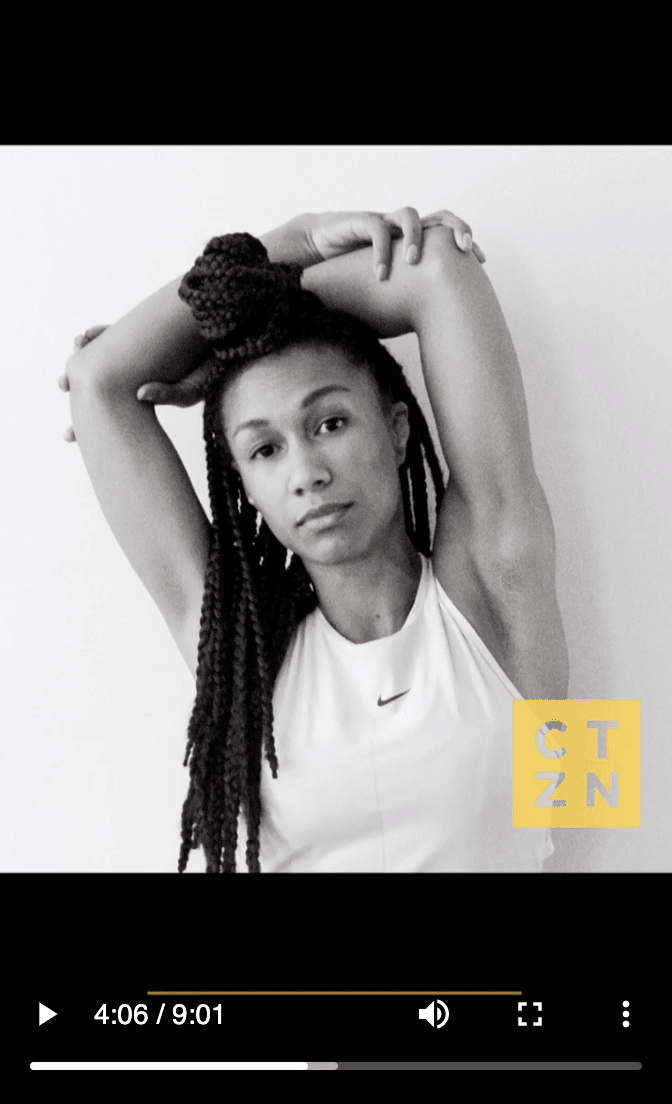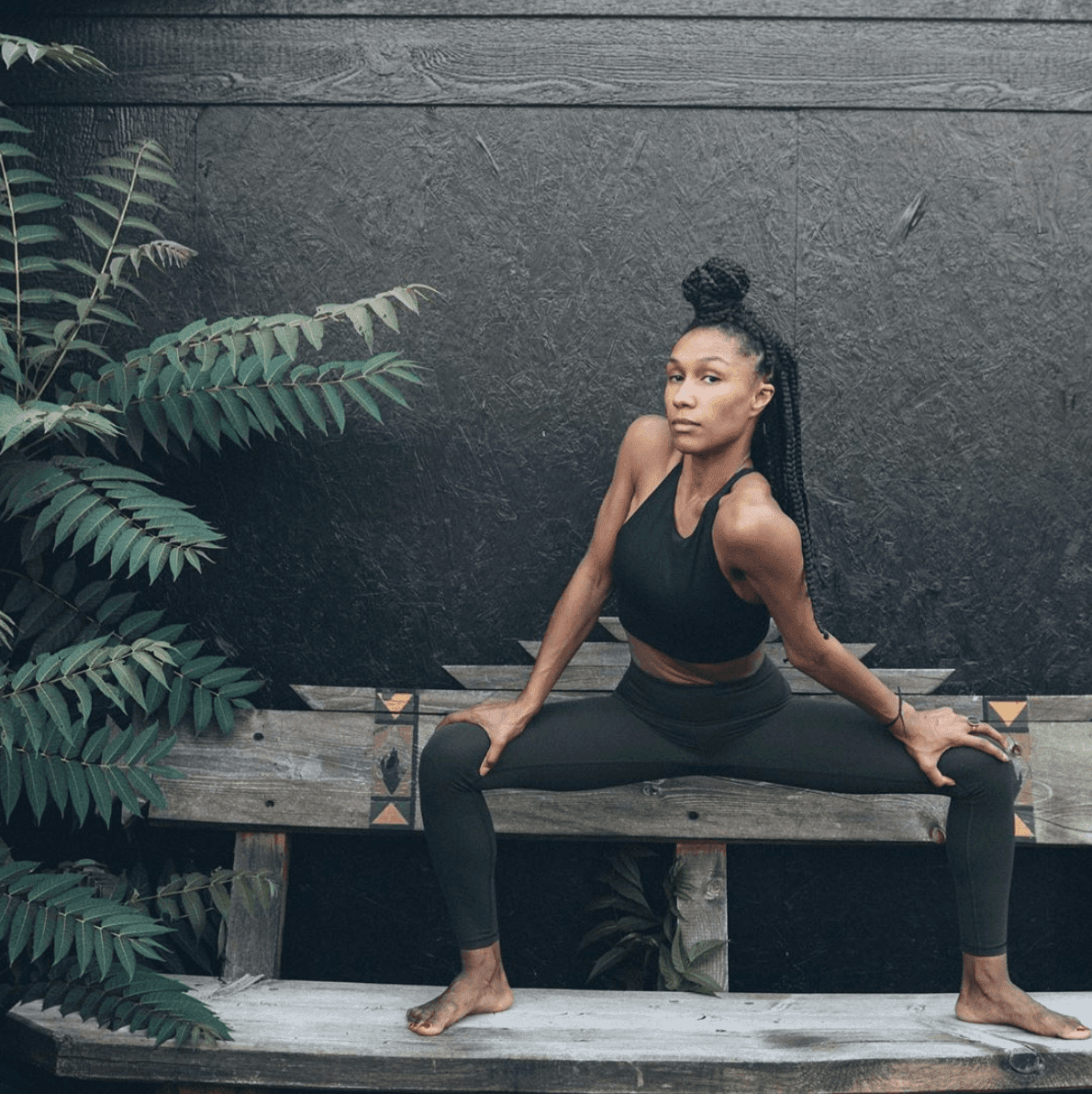
When Nicole Cardoza sat down with CTZNWELL Founder, Kerri Kelly, on the Yoga Foster school bus to have this deeply insightful conversation for the CTZN Podcast, the school bus was parked behind the stage at Wanderlust 108 Brooklyn. We were honored to have both Nicole and Kerri at our inaugural Wellspring in 2018, each sharing about how their work, in different but aligned ways, aims to make wellness not only more accessible, but to change the systems that have kept some communities from claiming their own right to wellbeing.
The following is an excerpt from their CTZN Podcast. We encourage you to follow their work, and to consider becoming a Patreon of their respective platforms, Reclamation Ventures and CTZNWELL.
The Capacity to Choose
Kerri Kelly: Here you are, back in a school bus, which is really where this vision started for you.
Nicole Cardoza: Yeah. I’ve always wondered what it would look like if schools were more well. When I started in school, I was the kid that couldn’t pay attention and got sent to the principal’s office all the time. In reality, I was learning a little bit faster than my peers. I was reading at a third grade level in kindergarten, but I didn’t look like the smartest kid in a room. And so a lot of teachers that I came into contact with and the assistant principal really didn’t think that that was for me.
So when I started teaching yoga in schools after I moved to New York City, I saw the impact it had on students where they felt like they could show up as their full selves. And I don’t think that schools oftentimes give us the chance to. And for me, when I moved to New York, it was the first time I practiced in my own body and that’s where I really felt like I was at home.
And so I started to teach as a volunteer yoga instructor in schools, then started to train school teachers and saw this opportunity to bring yoga and mindfulness into schools in a really cost effective way.
Yoga Foster is really about making wellness as elementary as possible. And that’s training the school teachers and when they have an embodied practice and they realize they can show up as their own selves and they don’t have to look at the world through their own lens that isn’t just theirs, but a systemic lens. It can help shift how they relate with their students.
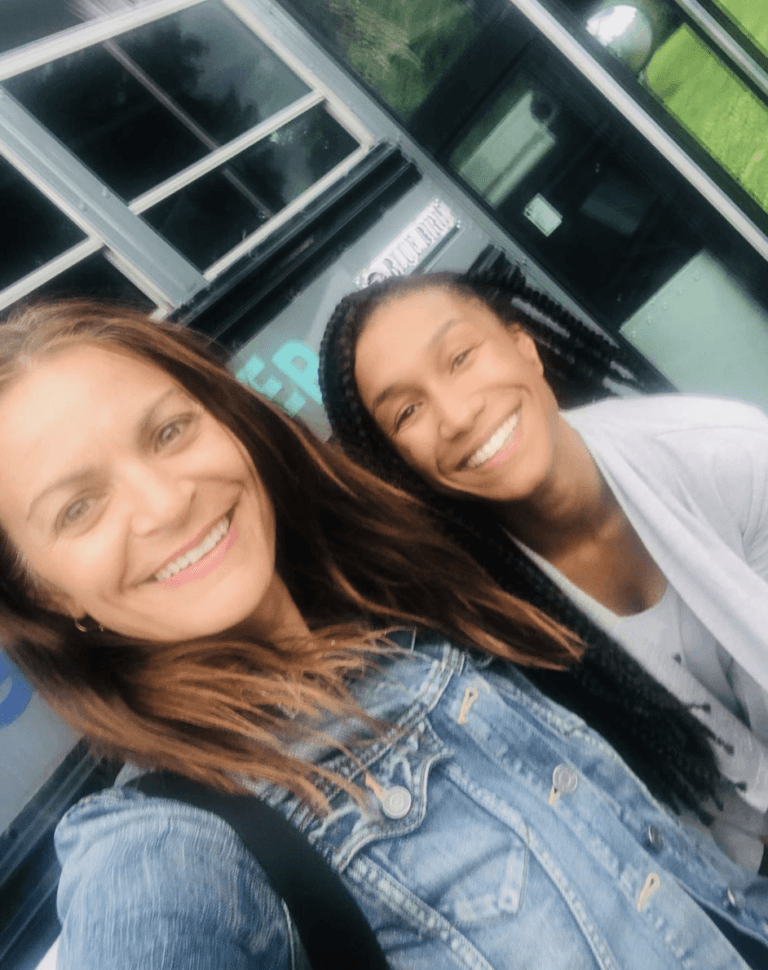 KK: Yes.
KK: Yes.
NC: So, I think it’s really important to have educators leading with that relationship to the practice if they have it, right? You don’t want to force it, but certainly giving them the opportunity to find that in themselves and then relate to students in a better way.
KK: Well, and I love that it sort of mirrors [how] you’re trying to teach to the whole student and [to do] that requires us to teach to the whole culture, right? You’re talking about transformation on a cultural and on a systemic level when you include teachers, when you include administrators, because we can’t just change the child and expect everything to be different when the conditions still suck.
NC: Right. And, I mean, teachers are one of the most underserved, underpaid, overworked populations. They’re showing up with a really limited amount of their own wellbeing, right? They’re kind of pouring from an empty cup and our system thrives off of that in so many different spaces. And so it’s not as easy to just help to transform a student when a teacher is walking in every day without the tools that he or she needs to be able to do that work.
80% of the teachers we work with get our programs completely for free. And I was reading an application from an educator that was saying the cost of our programs are prohibitive because she knows she needs to have money set aside so she can buy coats for the kids that will need them.
Because every year there’s kids that come to school that don’t have coats. And so as much as this practice can be so transformative, it is so incredibly inaccessible to educators who are paying hundreds upon hundreds of dollars out of pocket for some of their students most basic needs.
KK: How have you dealt with that? Because what I’m hearing is that this is an intersectional issue, right? It’s not just about bringing yoga and meditation into schools. It’s actually about being curious about what are the basic needs a child might need so that they can thrive in school.
I’m sure you’re running up against issues of warm clothes, of healthy food. Has the child even eaten breakfast? How are you handling, what I would imagine is a really overwhelming learning experience, as to how much our kids need right now to thrive?
NC: Yeah. For us it’s like we are a drop in the bucket and it’s almost sometimes I’d stay up at night thinking like what am I doing, doing this work when you know that there are kids that don’t have a meal in the morning. And for us, we do what we can with what we have. I’m really grateful for that and I do think that this practice can transform the climate of a school. But when we come into this school we say look, yoga and mindfulness might seem like a solve for physical activity but it’s not, it’s just the beginning of the conversation.
An Unconventional Path to the Cover of a Magazine
KK: Your journey to get onto the cover of Yoga Journal was messy to say the least, speaking of a gap. A gap in consciousness. Tell us a little bit about that experience. And I say that because I think those of us that know what happened with the Yoga Journal cover controversy carry a lot of story around it. But I think a big part of truth and reconciliation is actually listening to those who were most impacted by what happened to really understand their experience. And then we can talk about what needs to be done. So, I’d love to hear from you your perspective about what happened.
NC: Yeah. [It] kind of grew. It went from a piece on Yoga Foster to a piece on me and my work outside of Yoga Foster. Which turned into me being on the cover. And so I flew out to Denver, we did a shoot for the cover. We did three different cover shoots. So it’d be three different pictures.
KK: Which is all fine and good.
NC: It’s all amazing.
KK: Up until this point.
NC: A few weeks later I hadn’t heard anything but knew the stuff was happening with the social media stuff. So I wasn’t that concerned. And then one day somebody on Instagram sent me a picture of myself on the cover of Yoga Journal. And Kathryn Budig on the cover of Yoga Journal as well.
KK: Who is a great yoga teacher, but also white and looks more like a traditional stereotype of yoga according to the yoga media conglomerate.
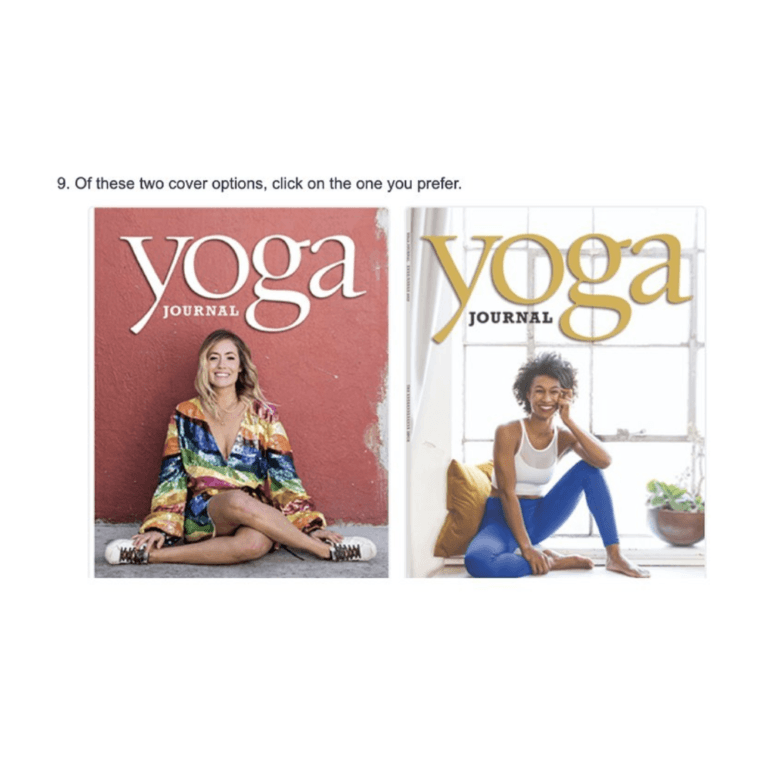 NC: Yeah. Correct. Yes. And she was also on the cover at this time last year. So it was a cover of her and a cover of me in a survey that says choose which cover model you would want. And this person sent me that photo and they said, “I voted for you. I hope you get it.” And I’m like, I have no idea [what this is]. Yoga Journal had posted a survey on all of their social channels asking their community to vote between three cover models, myself, Kathryn and Tao Porchon-Lynch. And had pictures one by one against each other.
NC: Yeah. Correct. Yes. And she was also on the cover at this time last year. So it was a cover of her and a cover of me in a survey that says choose which cover model you would want. And this person sent me that photo and they said, “I voted for you. I hope you get it.” And I’m like, I have no idea [what this is]. Yoga Journal had posted a survey on all of their social channels asking their community to vote between three cover models, myself, Kathryn and Tao Porchon-Lynch. And had pictures one by one against each other.
KK: And the winner would then get the cover.
NC: Would get the cover. That’s correct. So that was the surprise.
KK: This is problematic on so many levels.
NC: Yeah. First off is contractually wrong. So even if you just take it out there, it’s not good business. And we’re going to talk about capitalism, but just in the basic sense of business is not good business. So the first thing I did when I saw the picture that was sent to me was I felt so ashamed. And I think it’s because it was one of the most blatant representations of how I feel all the time in this space and as an entrepreneur is, or just as a black woman walking in America, my lived experience of like, oh, I shouldn’t have worn my natural hair. I should have had a weave because I had a weave all through high school.
I see Kathryn, who’s an incredible person, but I also see the girl that got all of the guys that I had a crush on. So there was just this big moment for me where I felt so ashamed and went home and cried. And then later in the day Yoga Journal sent me a message that said like, “Hey, here’s your story. Can you proofread this and send some edits? Oh, by the way, we launched this cover survey. We really need to know what cover will sell. So, let us know if you have any questions.”
Which kind of just twisted the knife that I felt because… my story was fine. And the work that I do is fine, but it was just the picture of me that was the issue.
KK: Do you think it took off [on social media] because more people are starting to have more skills and consciousness around why it’s wrong to compare white bodies and black bodies for the sake of capitalism and sale? What do you think is shifting in the culture that made this particular conversation land?
NC: I think so, yes. I think it’s more specifically [that] I think more people are becoming comfortable having these conversations publicly. Because I think what was really powerful about what I posted is that the reason it got traction early on is because so many black women shared it. And I think it’s because that’s a lived experience we can all feel and really relate to very easily. But we are all now taking on so much responsibility on social media where things can happen more quickly to have these conversations.
I do think that the wellness space and people in wellness are starting to get fed up about this too, which is why I continue to grow.
A New Venture is Born
NC: At that point [I asked myself], what is the best next step from this? So, in that [first social media] post I mentioned that I wanted to start raising money for other entrepreneurs who are doing good work because, ironically, this was what my feature in the magazine was all about. This idea that we need more representation and more people creating spaces for all of us to be well because the way that this system works.
We raised $5,000 from that initial post, which was incredible. So, I decided to give $5,000 away to an entrepreneur doing dope things. And then from there, when I talked to Yoga Journal, I told them that they couldn’t use any of my content and they certainly couldn’t put me on the cover unless they donated all of the profits of the magazine issue to that fund [Reclamation Ventures]. Because again, I don’t think anybody should be allowed to profit off of this kind of harm and certainly we can do better with that money and do better with that work.
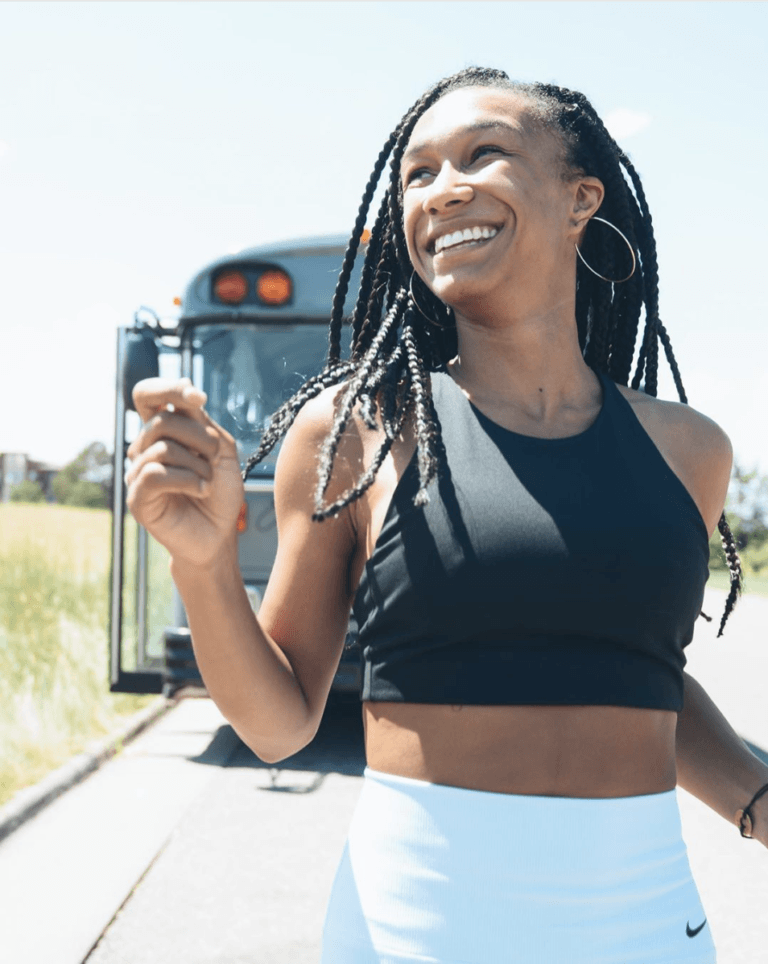 KK: One of the things that you’re addressing with this fund is what you call the wellness gap. And we talk about the wellbeing gap all the time at CTZNWELL and we’re kind of hitting at it from a political standpoint. But we define it as the unequal conditions that determine who gets to be Well and who doesn’t, right? That’s the gap.
KK: One of the things that you’re addressing with this fund is what you call the wellness gap. And we talk about the wellbeing gap all the time at CTZNWELL and we’re kind of hitting at it from a political standpoint. But we define it as the unequal conditions that determine who gets to be Well and who doesn’t, right? That’s the gap.
And we talked about this before already, but it’s an intersectional gap, right? Because if you can’t pay your rent, you can’t pay for a yoga class. So, it requires those of us addressing the gap to have a really big analysis and big relationships with one another, right? In the way in which we understand the problem and work at it from different directions to solve it. But I’d love for you to talk a little bit more about your vision for how this fund is going to close the gap. What is your contribution? And that’s going to help me, too, as an advisor and as an ally to figure out, how, politically, we can help what you’re doing. Everybody, then, can find their place in how we can all be closing this gap because there shouldn’t be one, right? Wellbeing, Wellness should not be a privilege, it should be a right. Should be a human right.
NC: Yeah. Absolutely. And for us it’s a pretty unique fund because we’re using accessibility and wellness as our KPI for success. So instead of going into a new market and thinking about opening a new yoga studio and figuring out, where am I going to make the most money? It’s like, who can I serve if I opened a new yoga studio here that might have been left out of the conversation historically?
KK: Yes.
NC: And I think it’s a lot different than how we see most big brands enter spaces who are leading the majority of what we define as wellness as an industry. And it makes it incredibly difficult for really awesome entrepreneurs that represent the communities that they serve to start something. And I think Yoga Journal is a perfect example. I’m a woman of color that started a nonprofit. We get this magazine cover that’s coinciding with this tour. And I’m told that how I look isn’t good enough to sell the work that I do. Right? And then that this brand has decided that they would prefer to put somebody else there but still have pages and pages worth of my content inside. So, I don’t get to choose when I walk into a fundraising meeting or when I step off of a school bus, how people perceive my work based off of my body. That shouldn’t be something other people can decide. And so I’d love to see more brands that are in spaces representing wellness that are taking all of that into account.
—
Check out Nicole Cardoza’s work with Yoga Foster, Reclamation Ventures. You can support the next generation of underrepresented wellness entrepreneurs via the Reclamation Ventures Patreon. Follow her on Instagram, as well as the ‘grams of Yoga Foster and Reclamation Ventures.
Kerri Kelly will keep you in the know and engaged when you subscribe to CTZNWELL’s free weekly newsletter, well-read. CTZN Podcast is community inspired and crowdsourced, so please consider a monthly contribution via Patreon. You can also follow CTZNWELL and Kerri on Instagram.
